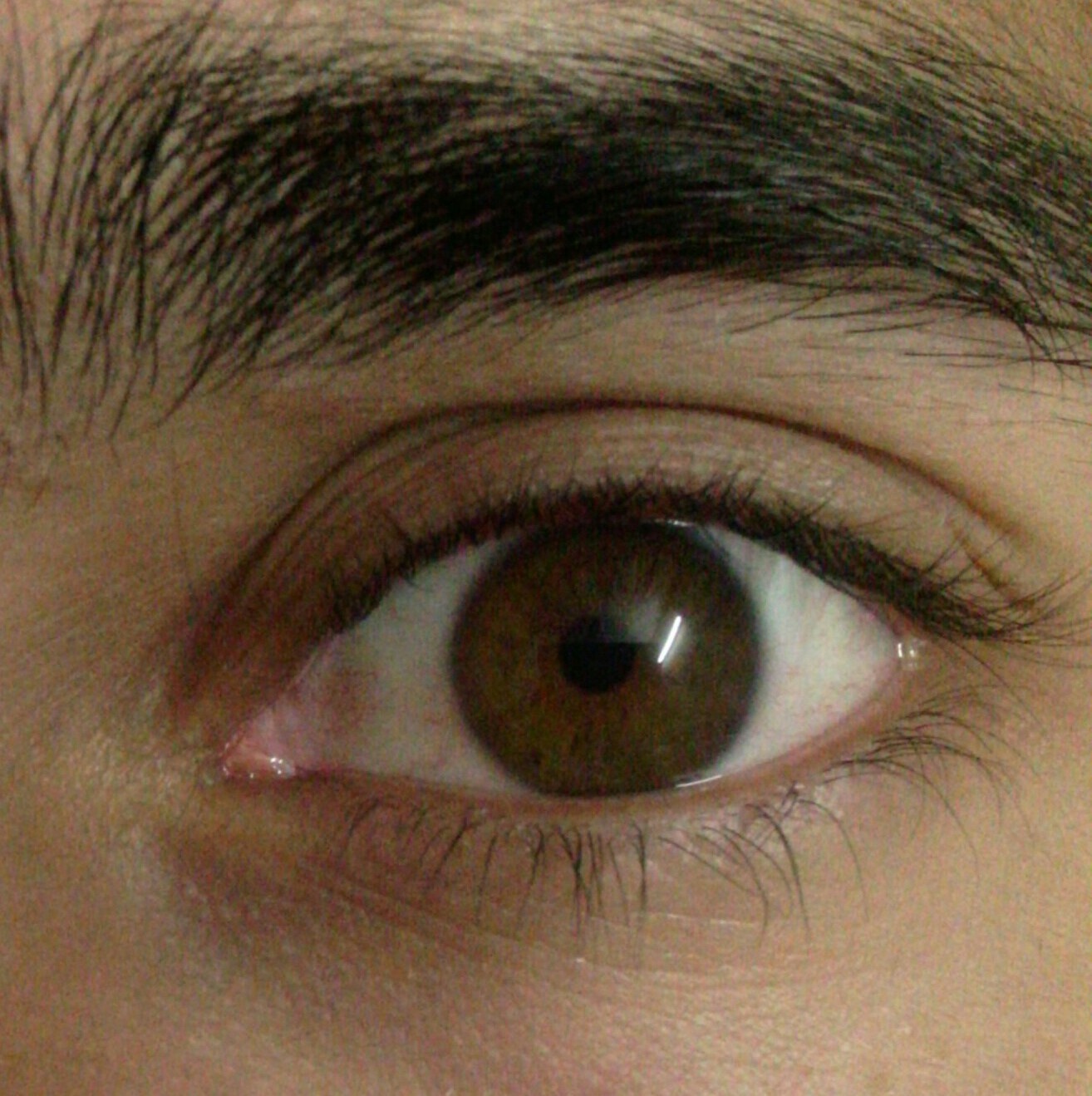

It’s interesting to note that there are no actual blue, hazel or green pigments present in the eye. Brown eyes have maximum melanin while green and hazel have less melanin produced during development period. However, as they grow, if enough melanin gets produced, the blue eyes may turn to green, hazel or brown.


Initially, one may find many white non-Hispanic babies with blue eyes as enough melanin is not yet present in their eyes at birth. The pigmented structure of melanin surrounding the pupil and known as iris, lend the eye its color. Hazel eyes are basically manifested because of a dominant gene. Moreover, eye color is known to change dramatically in the first few years of a person’s life, this is not in regard with only hazel eye facts but any color of eyes for that matter. Other factors which impact eye color are pigmentation of the iris and the dispersion of light around the iris. It is this interaction that makes both parents having blue eyes, conceive a brown eyed child. The final eye color is decided by the interaction and expression of various genes. This makes predicting eye color a next to impossible task. According to genetic research, there are almost about 16 genes passed from the parents to the child that determines the eye color. What Determines Hazel Eye Color?īy now, you know that its heredity that determines your actual eye color. Because of the dynamic color change, identifiable eye colors are safely teamed up in the hazel eye bracket. Even brown eyes dull down to hazel while aging. 15% of people are known to manifest it during puberty. We already spoke about eye color changing during our life. They are a rare occurrence in Asia and Africa where the brown eye color rules. The Hazel eye colour is more commonly encountered in the United States and the European countries. Where Do Hazel Eyes Come From?Ĭompared in terms of number, there are more brown eyes than hazel eyes though they outnumber green eyes. The Hazel eye colour has been the much talked about eye colour and here is a detailed insight on it. It is genetics here that decides how light would break across the melanin base to ooze hazel color. the way a light scatters over any object after riding its spectrum wavelength. The hazel eyes are also the result of the phenomenon, Rayleigh scattering i.e. An interesting Hazel eyes fact is that they have more melanin than blue eyes but less than brown. The pigment responsible for eye-color is melanin which is a complex polymer formulated from the amino acid, tyrosine.

Eye colors are predominantly influenced by the pigmentation of the iris and how light scatters around it. Scientifically, eye color is a function of genetics and heredity. However, it can also be caused by an eye injury or a medical condition.One of the least understood eye color hazel eyes are semi-rare and are a combination of several colors which includes green and brown. Heterochromia is the result of a genetic mutation caused by variations in the distribution and concentration of melanin. Like red eyes, heterochromia is rare and effects less than 1% of the population. Albinism happens when there is a problem with one of the genes inherited from the mother. Only 1% of people have pink and pale red eyes they are typically albinos. They are most common in Northern and eastern Europe. Green eyes originate from areas around the Caucasus Mountains.Īround 3% off people in the world have grey eyes. People are not born with green eyes they usually develop at around 6 months old. Green eyes affect around 2% of people worldwide however, they make up 86% of the population in Ireland and Scotland. Light brown eyes are most common in West Asia, America and Europe. According to World Atlas, 8% - 10% of people in the world have blue eyes.īetween 55% to 79% of people have brown eyes with dark brown eyes being most prominent in Africa, East Asia, and South East Asia. They believe that the first person to have blue eyes had a genetic mutation that caused the body to reduce its melanin production.īlue eyes are most common in the UK, Ireland, Finland and Sweden. Scientists believe that thousands of years ago, everybody in the world had brown eyes. Rare eye colours originate from genetic mutations. Where do rare eye colours originate from?


 0 kommentar(er)
0 kommentar(er)
